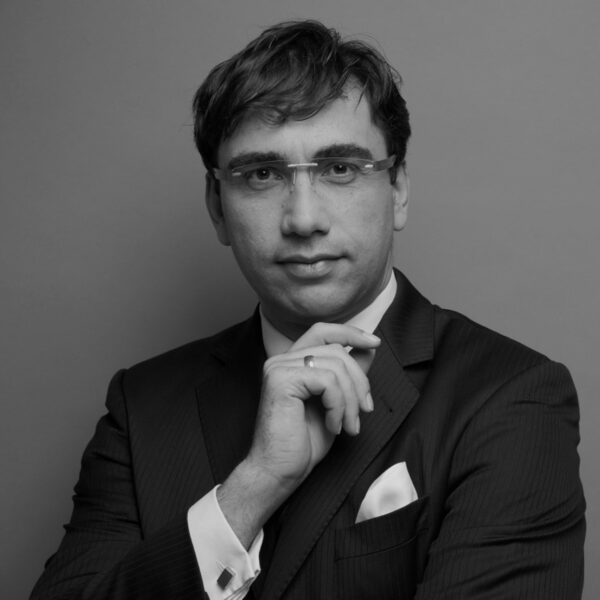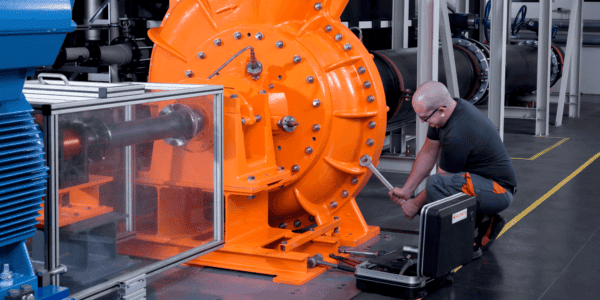
Sven Gabor Janszky is a futurologist and is optimistic about the times ahead. In an interview with Janice Köser, they discuss the opportunities that the future holds, and, above all, what steps German companies need to take to seize them: Most of them, he is sure, are still working with the false ideas of the future and the erroneous methods to develop their strategies.
The future is looking good
As a futurologist and innovator, Sven Gabor Janszky is convinced that the world will be a better place: “There is a good chance that my children will live to be 120 years old. That is to say that they will live much longer and healthier lives.” Companies, too, could be producing much better products, earning more and becoming larger. To achieve this, though, the right mindset is needed, as well as the need to break away from some deeply ingrained views. The future will be determined by technologies that we need to open ourselves up to.
Technologies pave the way for new opportunities
There are quite a few major trends developing in the field of technology, which will largely shape how work is performed in companies in the future.
For example, forecasts are now continuously being made with the help of quantum computers. “We also call this Predictive Economy. The effects that will lead to changes in work are foreseeable here,” explains Sven Gabor Janszky.
The second key technology is Metaverse, a digital universe beyond physical reality that is intended to bring all virtual worlds of experience together into one digital space. Metaverse as such does not yet exist, so this still leaves a lot of room for development. Users can still try out a number of things here, and it is likely that many of the opportunities envisioned will ultimately reach a dead-end or will not be of any use.
The challenge for entrepreneurs will be to find out how they can and will use the potential that Metaverse has to offer. Conceptually, the best way to do this is to ask what they want to offer their customers and how they want to improve their products and services. Yet in order to decide the options that are most worthwhile for them, entrepreneurs will first need to understand the different perspectives. Sven Gabor Janszky’s book “2030: How much humanity can the future take?” is one way to find out quickly and in detail.


The first step that needs to be undertaken now is generally going to be bigger, steeper and more ambitious, and will have a lot more to do with technology and new opportunities than if you continue with the current logic.
Sven Gabor Janszky,
Futurologist, Chairman, Author, Coach
Innovations involves breaking all the rules
Almost every advancement has come about by breaking the rules: Throughout history, humanity has never allowed itself to be satisfied with the status quo, has broken rules, pressed passed limitations and created new templates. If the new turned out to be better than the old, humanity replaced it. For instance, Google did not streamline physical libraries, but instead repackaged knowledge, prepared it digitally, and offered it. “Rule-breakers have the ability to break down their own thought patterns,” explains Janszky. In a society in which traditions and the argument “We’ve always done it that way” are highly valued, this is exactly what is needed.
More than 90 percent of people make their daily decisions not based on rational reflection, but on the basis of their learned or acquired routines. For rule-breakers or sensation seekers, on the other hand, the instinct to break routines comes naturally. They have what is known as the Growth Mindset. “These are the people who are always looking for something new,” says futurologist Janszky. While they only make up about 15 percent of humankind, they are the people entrepreneurs should seek to surround themselves with if they hope to create the right environment for innovation.
Step by step – but by backcasting, please
As an entrepreneur, if you want to get an idea of what the future holds for your own company, you should not only choose the right people for the job, but also the right method. Analyzing the present and then planning the next step is not effective. A better approach is to proceed the other way around, says Janszky: “First get an idea of what you want your own environment to look like in five or ten years.”
Sven Gabor Janszky lists the questions that must be answered to achieve this:
- What will my value chains look like in a few years?
- What will my role be in these value chains?
- What will my business models look like then?
- Which products will I still be able to sell?
- Which will I have to give away for free?
- Which products will I be able to sell for money?
- What needs will my customers have?
The ideal position is formed once you have answered these questions. Once you have created a credible image and found your ideal positioning within it, take a step back from here, i.e. ask yourself: which step is the last one that needs to be taken in order to achieve this goal? This way, you will be taking it step by step back to the present. “The first step that needs to be undertaken now is generally going to be bigger, steeper and more ambitious, and will have a lot more to do with technology and new opportunities than if you continue with the current logic,” Janszky explains.
Creating an environment for innovations
Many companies that have been successful in the past and continue to be successful in the present are reluctant to make any changes to their core business – why change what has proven itself? Taking a two-pronged approach would make sense here: In the main business, the old values and procedures can be retained. For those who don’t want to lose touch, think about setting up a startup alongside your core business to create room for innovation. Here, the values may look different, rules may be questioned, broken and recreated. Taking this approach allows both to happen: On the one hand, the successful core business remains consistent as before; on the other hand, new ideas find fertile ground in an environment with greater tolerance for error.
Actively shaping the future
Companies have the opportunity to actively position themselves for the future of society and the work market. What is important here is to focus on what is likely to happen in the future from a scientific, economic and social point of view. Backcasting helps to create a promising picture of the future, and individuals with a Growth Mindset can provide meaningful support to companies.

Sven Gabor Janszky
Futurologist, Chairman, Author, Coach

More about this topic

“As a family-owned company, we always think and act with an eye to the next generation”
Munsch Pumpen, whose products are used especially in the chemical industry and for metallurgy, has been producing pumps since the 1960s. This company in the Westerwald is currently managed by Stefan Munsch, the family’s second generation. In the interview, this graduated engineer explains why sustainability was always writ large at Munsch and why he would sometimes like lawmakers to be a bit more practical.
Read more
Part 1: How to effectively reduce resistance when implementing change initiatives
Does this sound familiar? As a leader, you want to implement a change in your area, have come up with a new strategy, and have set the relevant goals and KPIs with your staff. Yet the steps to implement the planned measures set to achieve these goals are taking so long to complete. Your staff is dragging their feet and is not implementing the change in their everyday work. Why is that?
Read more
Executive Leader Program
The accelerated speed of today’s transitions and dynamic market developments are trends that require top-tier managers to acquire new skills. In addition to general management and strategic finesse, the focus is shifting towards establishing competence in the areas of leadership, change management and continuous improvement of organizational structures and employees.
Read more



